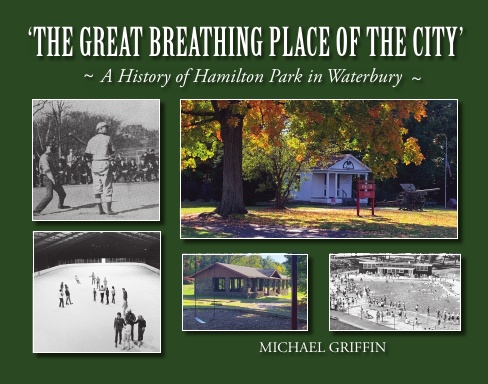Description
As of 2023, the city of Waterbury, Connecticut boasts of some 30 parks and recreation centers, with approximately 1,000 acres of municipal park property located within its borders. Considering the abundance of recreational spaces and activities now on offer to city residents, it might be hard to consider that at the dawn of the 20th Century, there was not a single public park open in Waterbury, apart from The Green in the city center.
Things began to change in 1899, when a parcel of land was donated to the city by Isabel Ely Hamilton, with the request to have the site developed as a municipal park named for her deceased husband David B. Hamilton – a noted statesman and businessman in a city that was booming as a major center for brass manufacturing.
As Waterbury’s first purpose-built municipal park, Hamilton Park developed into a favored locale among city residents as numerous features were added. It was home to a small zoo for a few decades, it included an acclaimed rose garden and it featured one of the state’s top dance/music halls during the Big Band era, where the likes of Tommy Dorsey, Count Basie and Glenn Miller performed.
Even as additional sites were introduced into Waterbury’s system of parks, Hamilton Park remained one of its top recreational venues, offering some of the city’s favorite ice skating and swimming spots during its glory days. The first-ever baseball game played under the lights in Waterbury was held at Hamilton Park. Major League Baseball’s Philadelphia Phillies once played a game on the Hamilton Park field, as did the great Jim Thorpe – proclaimed in his day as “the world’s greatest athlete.”
One corner of the park was previously home to one of the first mills in the country to roll brass, while the park’s opposite side features a bridge designed by George Dunkelberger, renowned for his many bridges along the Merritt Parkway.
Recognized for its notable features and storied past, Hamilton Park was listed on the National Register of Historic Places in 1996. “The Great Breathing Place of the City” details the park’s history and distinctive facilities that have captivated city residents for more than a century. And with the park beginning to undergo a major renovation while approaching the 125th anniversary of its establishment, this book will help to keep alive the memories of some features and attributes that are being displaced at one of the city’s treasured landmarks.
(134 pages; hardcover)



Reviews
There are no reviews yet.